Anatomy of the Eye and Eyelids
The eye is a complex organ that works in conjunction with the brain to provide vision. The eyeball itself is a globe-shaped structure made up of several layers, including the sclera, choroid, and retina. The front part of the eye is covered by a clear structure called the cornea, which allows light to enter the eye.
The eyelids are made up of skin, muscle, and connective tissue, and are responsible for protecting the eye and distributing tears over the surface of the eye. The upper and lower eyelids each contain a small gland called the lacrimal gland, which produces tears that lubricate and protect the eye.
There are also several structures within the eye socket, or orbit, including the muscles that move the eye, the optic nerve, and the fatty tissue that cushions the eye. The position of these structures can play a role in the development of eye shrinkage after blepharoplasty.
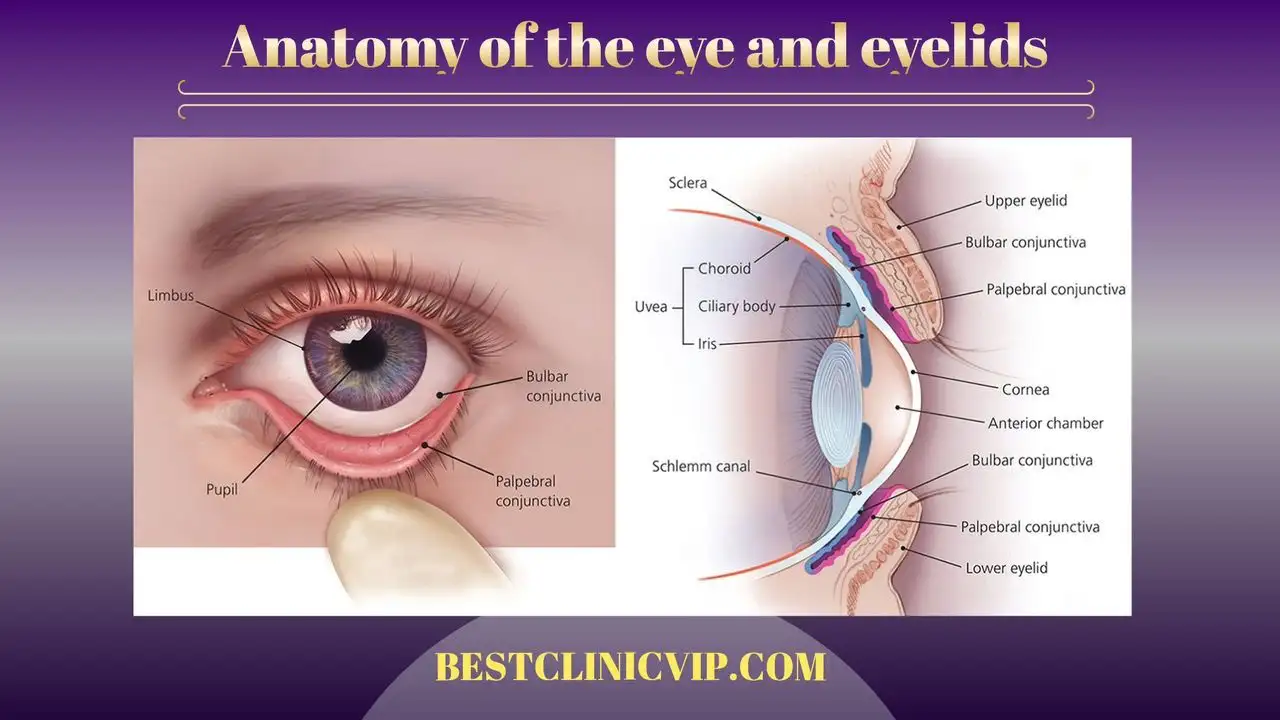
Anatomy: The Key to Understanding Eye Shrinkage After Blepharoplasty
How blepharoplasty works
During the procedure, the surgeon makes small incisions in the natural creases of the eyelids, through which they can remove excess skin, muscle, and fat. The incisions are then closed using small sutures or surgical glue.
Blepharoplasty can be performed under local anesthesia with sedation or general anesthesia, depending on the extent of the procedure and the patient’s preferences. The recovery time varies, but patients can usually return to work and normal activities within a week or two after the procedure.
While blepharoplasty is generally considered safe and effective, it is important to understand the potential risks and complications associated with the procedure, including eye shrinkage or enophthalmos.
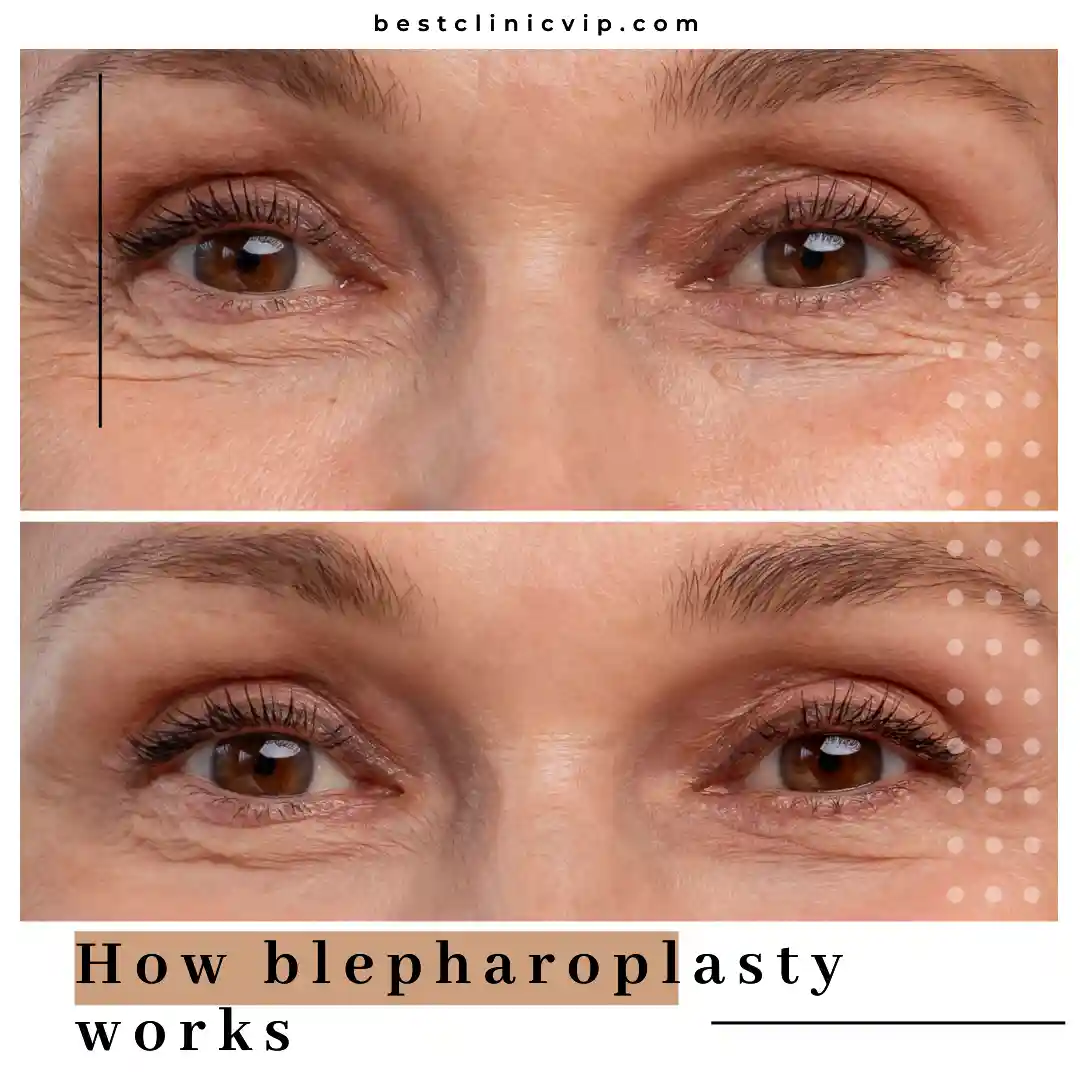
Eyelid Rejuvenation: Transforming Your Look with Blepharoplasty
Complications of blepharoplasty
- Bleeding: Excessive bleeding can occur during or after the procedure, which may require additional treatment or surgery.
- Infection: Infection can occur in the incision sites or in the surrounding tissues, which may require antibiotics or additional treatment.
- Scarring: While the incisions are made in the natural creases of the eyelids to minimize scarring, some scarring may still occur.
- Dry eyes: After the procedure, some patients may experience dry eyes due to changes in tear production or the position of the eyelids.
- Eye irritation: The eyes may become irritated or sensitive to light after the procedure, which can be managed with eye drops or medication.
- Eyelid malposition: In rare cases, the position of the eyelids may be affected by the surgery, causing them to droop or pull away from the eye.
- Eye shrinkage: Eye shrinkage, or enophthalmos, is a rare but serious complication that can occur when the eyeball recedes back into the eye socket, causing the eye to appear smaller and sunken.
It is important to discuss the potential risks and complications with your surgeon before undergoing blepharoplasty and to follow all pre-and post-operative instructions to minimize the risk of complications.
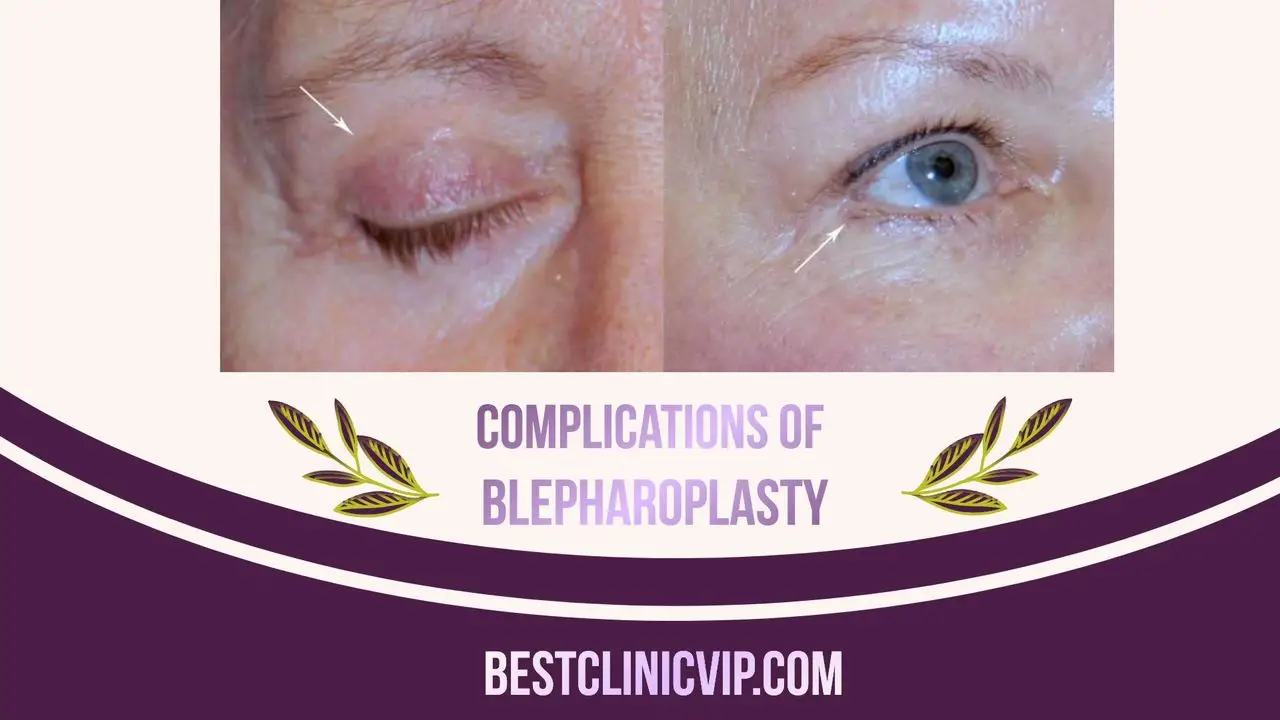
Understanding the Risks: Potential Complications of Blepharoplasty
Understanding eye shrinkage
Eye shrinkage can cause a range of symptoms, including:
- Reduced vision or visual acuity
- Double vision
- the Sunken or asymmetrical appearance of the eye
- Pain or discomfort in or around the eye
- Dryness or irritation of the eye
- Difficulty wearing contact lenses or eyeglasses
Eye shrinkage after blepharoplasty is a rare but serious complication that can affect a patient’s vision and appearance. Understanding the potential causes and risk factors for eye shrinkage after blepharoplasty can help patients make informed decisions about their surgical procedures and improve their outcomes.
Causes of eye shrinkage after blepharoplasty
- Removal of too much fat from the eye socket during surgery can cause the eye to sink back into the socket.
- Trauma or injury to the eye socket during surgery can cause the eye to be displaced or recessed.
- Inflammation or scarring around the eye socket after surgery, can cause the tissues around the eye to contract and pull the eye back into the socket.
- An underlying medical condition that affects the eye or eye socket, such as thyroid eye disease or a tumor.
- A pre-existing asymmetry or difference in the position of the eyes can be exacerbated by the surgery.
- Poor healing or tissue damage after surgery can affect the position of the eye.
- Infection or bleeding around the eye after surgery can cause inflammation or tissue damage.
It is important to discuss the potential risks and complications of blepharoplasty with your surgeon before undergoing the procedure and to follow all pre-and post-operative instructions to minimize the risk of complications, including eye shrinkage.
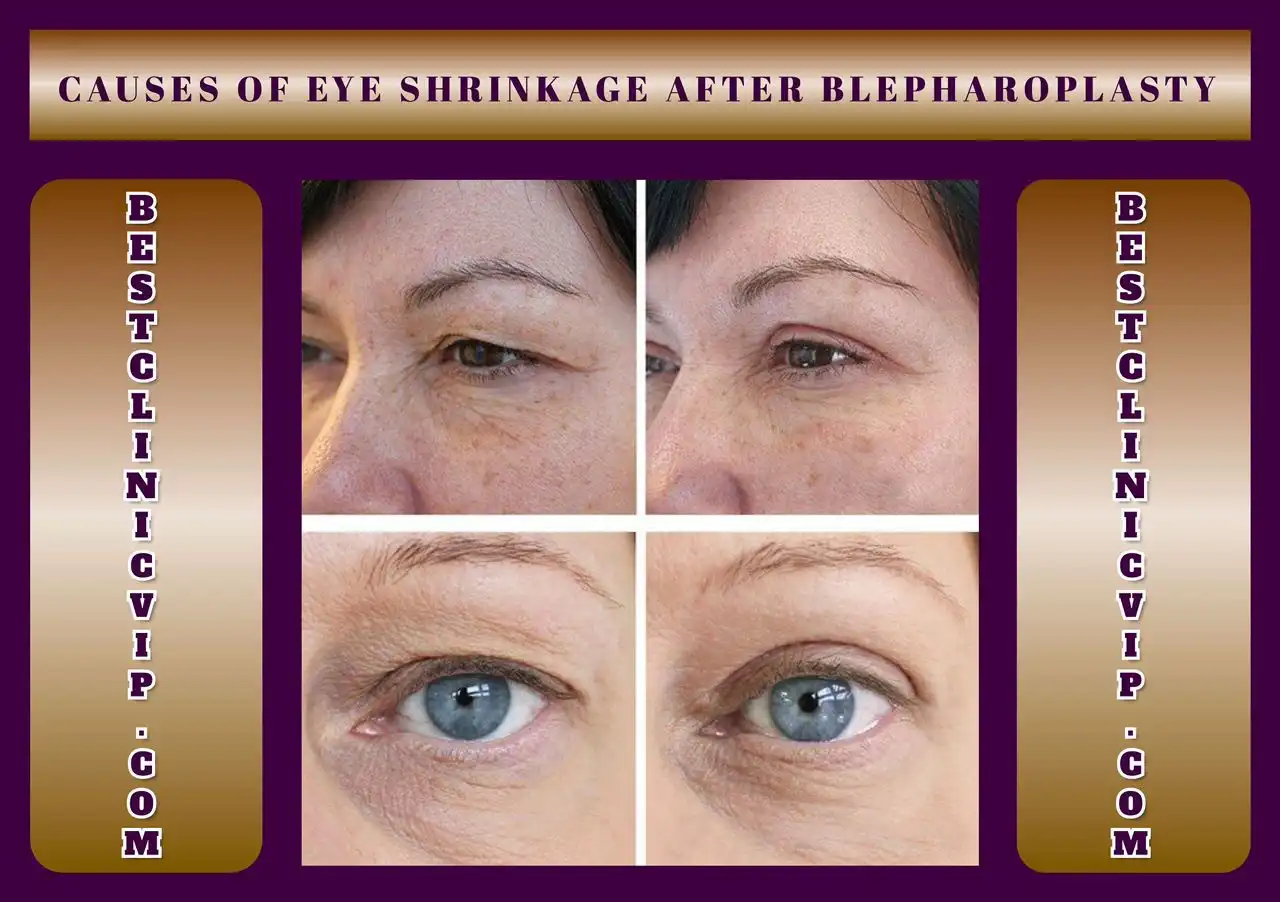
Eye Shrinkage After Blepharoplasty: Causes and Complications
Risk factors for developing eye shrinkage
- Older age: As we age, the tissues around the eye socket can become weaker and less elastic, which can make it more difficult to maintain the position of the eye after surgery.
- Thin skin: Patients with thin skin around the eye may be more susceptible to developing eye shrinkage after blepharoplasty.
- Previous eye surgery: Patients who have had previous eye surgery, such as cataract surgery or corneal transplant, may be at increased risk for developing eye shrinkage after blepharoplasty.
- Underlying medical conditions: Patients with certain underlying medical conditions, such as thyroid eye disease or a tumor, may be more prone to developing eye shrinkage after blepharoplasty.
- Type of blepharoplasty: Patients who undergo more extensive or invasive blepharoplasty procedures may be at greater risk for developing eye shrinkage.
- Surgeon experience: The experience and skill of the surgeon performing the blepharoplasty can also play a role in the development of eye shrinkage.
It is important to discuss these risk factors with your surgeon before undergoing blepharoplasty and to follow all pre-and post-operative instructions to minimize the risk of complications. If you experience any symptoms of eye shrinkage after surgery, it is important to seek prompt medical attention.

“Eye Shrinkage After Blepharoplasty: Identifying Risk Factors and Preventative Measures
Diagnosis of eye shrinkage after blepharoplasty
The diagnosis of eye shrinkage or enophthalmos after blepharoplasty typically involves a comprehensive eye examination, which may include:
- Visual acuity test: This test assesses your ability to see letters or shapes on an eye chart from a distance.
- Ophthalmoscopy: This test uses a special instrument called an ophthalmoscope to examine the inside of your eye, including the retina, optic nerve, and blood vessels.
- Hertel exophthalmometry: This test measures the distance between the front of the eye and the bony rim of the eye socket using a special instrument called a Hertel exophthalmometer.
- CT scan or MRI: These imaging tests may be used to visualize the eye and eye socket in greater detail, and to assess the position and size of the eye.
If eye shrinkage is suspected after blepharoplasty, your surgeon may refer you to an ophthalmologist or eye specialist for further evaluation and treatment. Treatment options may include observation, medication, or revision surgery to correct the position of the eye.
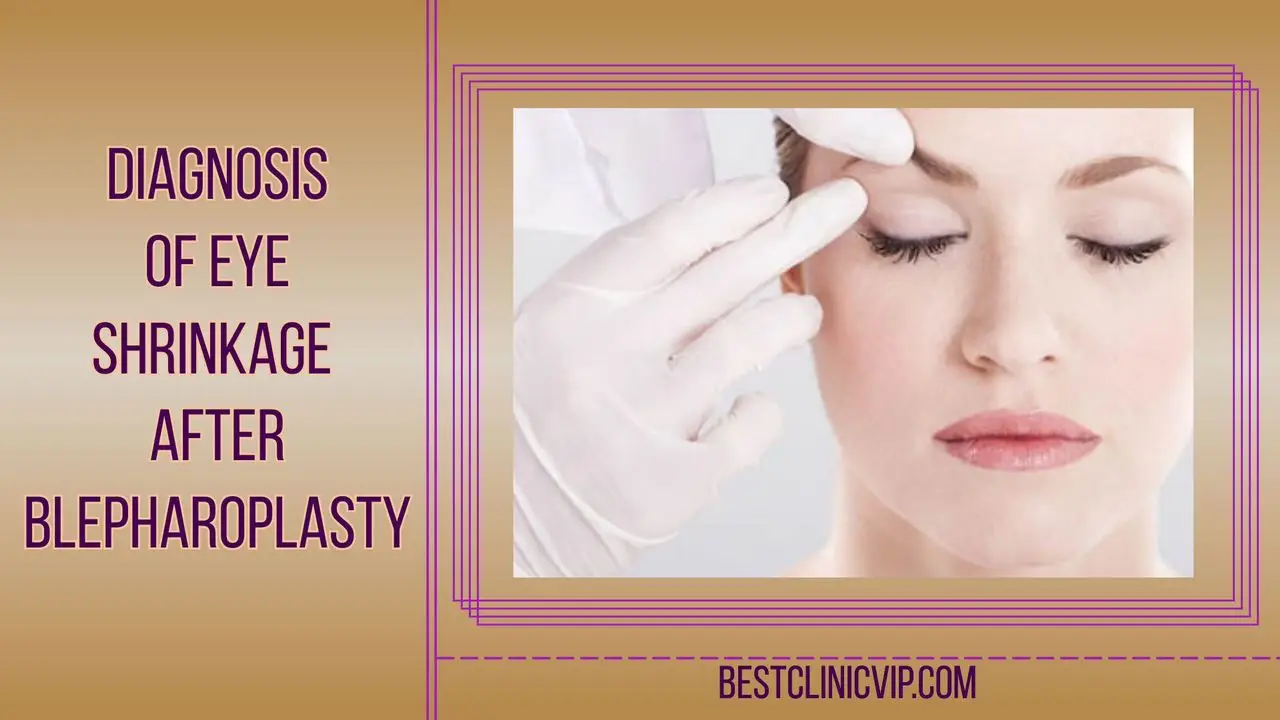
Diagnosing Eye Shrinkage After Blepharoplasty: The Importance of a Comprehensive Eye Examination
Treatment options for eye shrinkage
Treatment options for eye shrinkage or enophthalmos after blepharoplasty depend on the severity and underlying cause of the condition. Some possible treatment options include:
- Observation: Mild cases of eye shrinkage may not require treatment and can be monitored over time to see if the condition worsens or stabilizes.
- Eye drops or ointments: In some cases, eye drops or ointments may be prescribed to help lubricate the eye and prevent dryness or irritation.
- Steroid injections: In cases where inflammation or scarring is causing eye shrinkage, steroid injections may be used to reduce inflammation and promote healing.
- Revision surgery: If the eye shrinkage is caused by surgical complications, revision surgery may be necessary to correct the position of the eye. This may involve repositioning the eye, grafting tissue to the eye socket, or performing a fat transfer to restore volume to the area.
- Eyeglasses or contact lenses: In some cases, eyeglasses or contact lenses may be used to help correct the appearance of the eye and improve vision.
It is important to work with a qualified ophthalmologist or eye specialist to determine the most appropriate treatment approach for your specific case of eye shrinkage after blepharoplasty. Follow-up care and monitoring may also be necessary to ensure the best possible outcome.
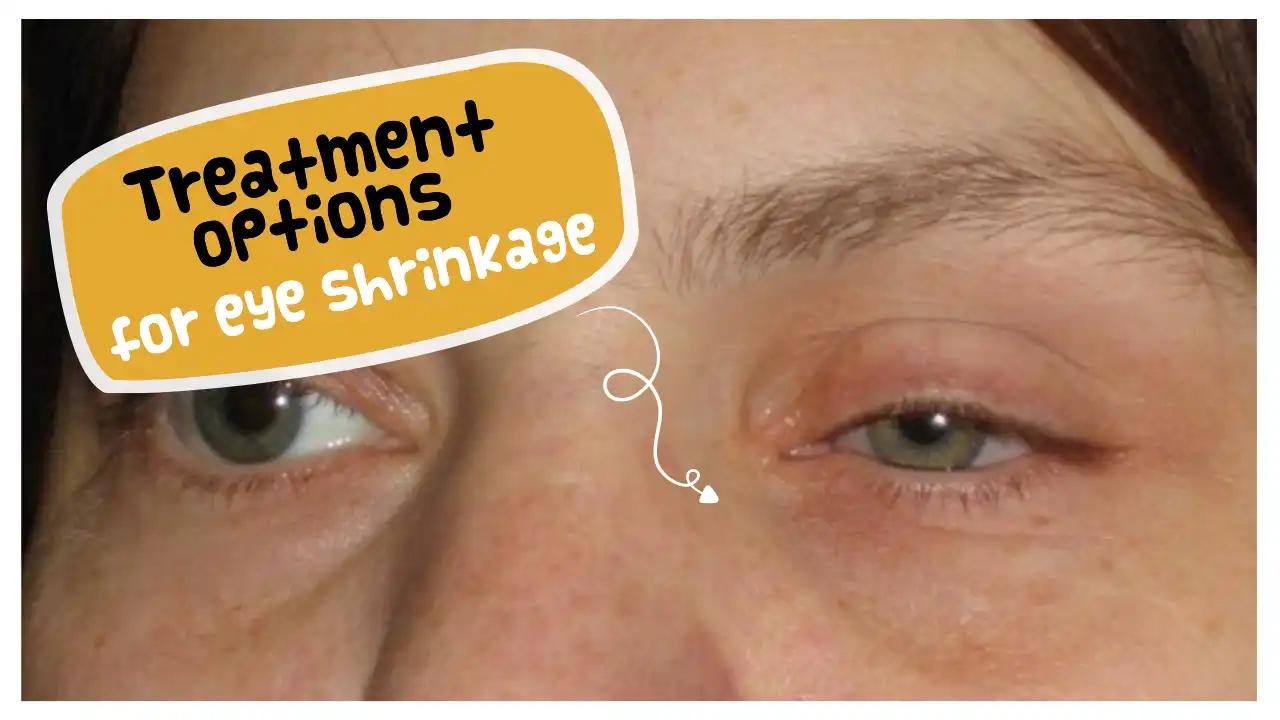
Treating Eye Shrinkage After Blepharoplasty: Finding the Right Solution for You
Prevention of eye shrinkage after blepharoplasty
Preventing eye shrinkage after blepharoplasty may not be entirely possible, as this is a rare complication that can occur even with proper surgical technique and care. However, there are some steps that can be taken to minimize the risk of developing eye shrinkage after blepharoplasty:
- Choose an experienced and qualified surgeon: Choose a board-certified plastic surgeon with experience performing blepharoplasty procedures.
- Communicate your medical history and concerns: Inform your surgeon of any medical conditions or concerns you may have, as well as any previous eye surgeries or injuries.
- Follow pre-operative instructions: Follow all pre-operative instructions, including avoiding certain medications and supplements, as well as not smoking.
- Follow post-operative instructions: Follow all post-operative instructions carefully, including avoiding strenuous activity, keeping the head elevated, and using eye drops or ointments as directed.
- Attend all follow-up appointments: Attend all scheduled follow-up appointments with your surgeon to ensure proper healing and to address any concerns or complications that may arise.
By taking these steps and working closely with your surgeon, you can help minimize the risk of developing eye shrinkage after blepharoplasty.
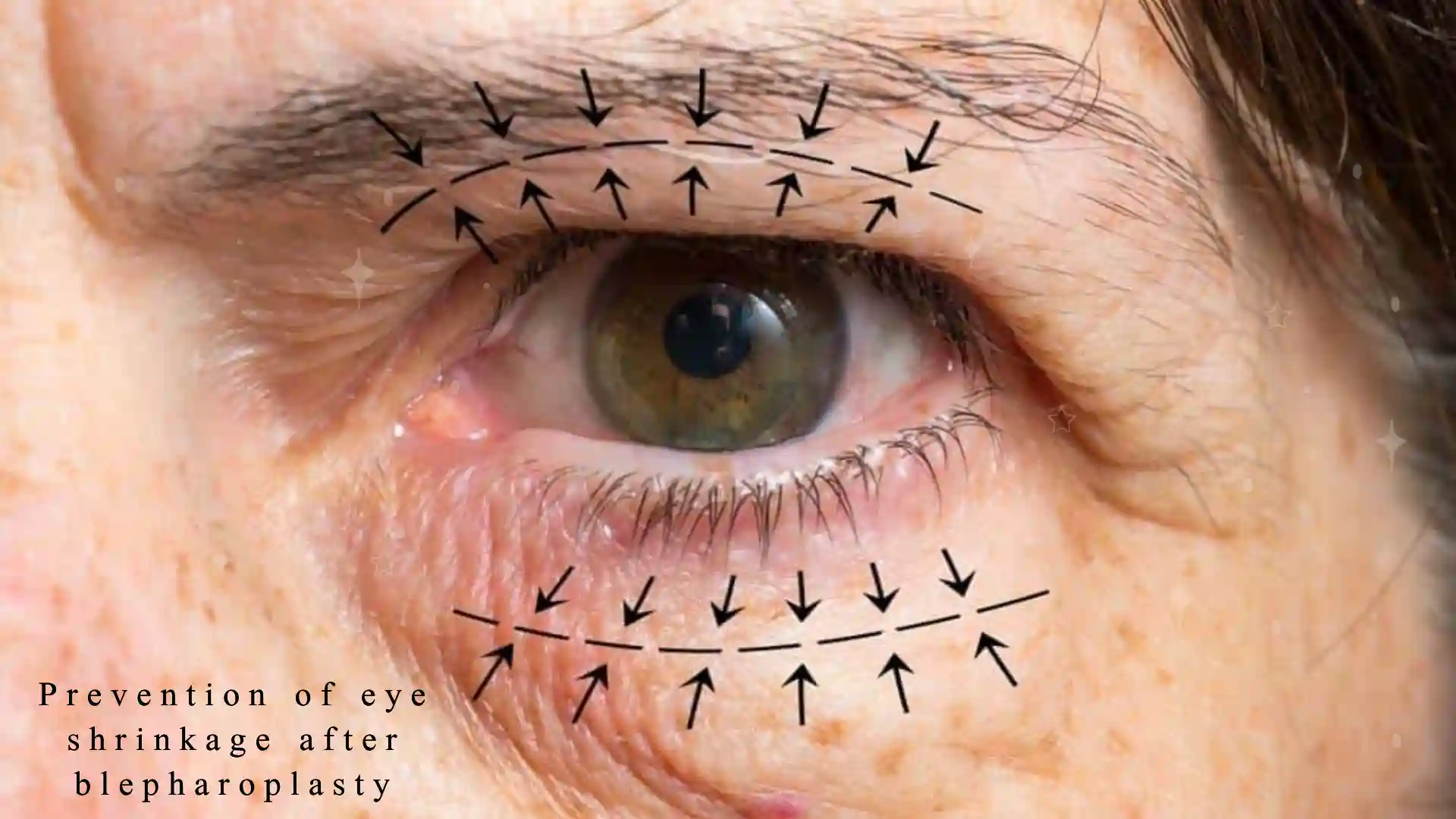
Minimizing the Risk of Eye Shrinkage After Blepharoplasty: Tips for a Safe and Successful Procedure
5 common Questions and Answers
-
Can eye shrinkage after blepharoplasty be reversed?
The treatment approach for eye shrinkage after blepharoplasty depends on the severity and underlying cause of the condition. In some cases, revision surgery may be necessary to correct the position of the eye and restore volume to the area. However, mild cases may not require treatment and can be monitored over time.
-
How common is eye shrinkage after blepharoplasty?
Eye shrinkage is a rare complication of blepharoplasty, with an estimated incidence of less than 1%. However, the risk of developing eye shrinkage can vary depending on a number of factors, including the surgical technique used, the patient’s medical history, and the extent of the procedure.
-
Can eye shrinkage after blepharoplasty cause vision problems?
Eye shrinkage can cause vision problems in some cases, particularly if the eye is displaced or sunken. This can lead to issues with depth perception, double vision, or other visual disturbances. It is important to address any vision problems associated with eye shrinkage with a qualified eye specialist.
-
Is it possible to prevent eye shrinkage after blepharoplasty?
Preventing eye shrinkage after blepharoplasty may not be entirely possible, as this is a rare complication that can occur even with proper surgical technique and care. However, there are steps that can be taken to minimize the risk, including choosing an experienced and qualified surgeon, following pre-and post-operative instructions carefully, and attending all follow-up appointments.
-
How long does it take to recover from eye shrinkage after blepharoplasty?
The recovery time for eye shrinkage after blepharoplasty can vary depending on the severity and underlying cause of the condition, as well as the treatment approach used. Mild cases may not require treatment and can be monitored over time, while more severe cases may require revision surgery or other interventions. It is important to work closely with a qualified eye specialist to determine the most appropriate treatment approach and to monitor recovery over time.

Risk factors for developing eye shrinkage include age




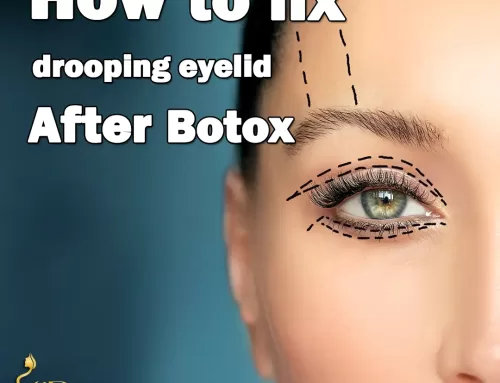

Leave A Comment